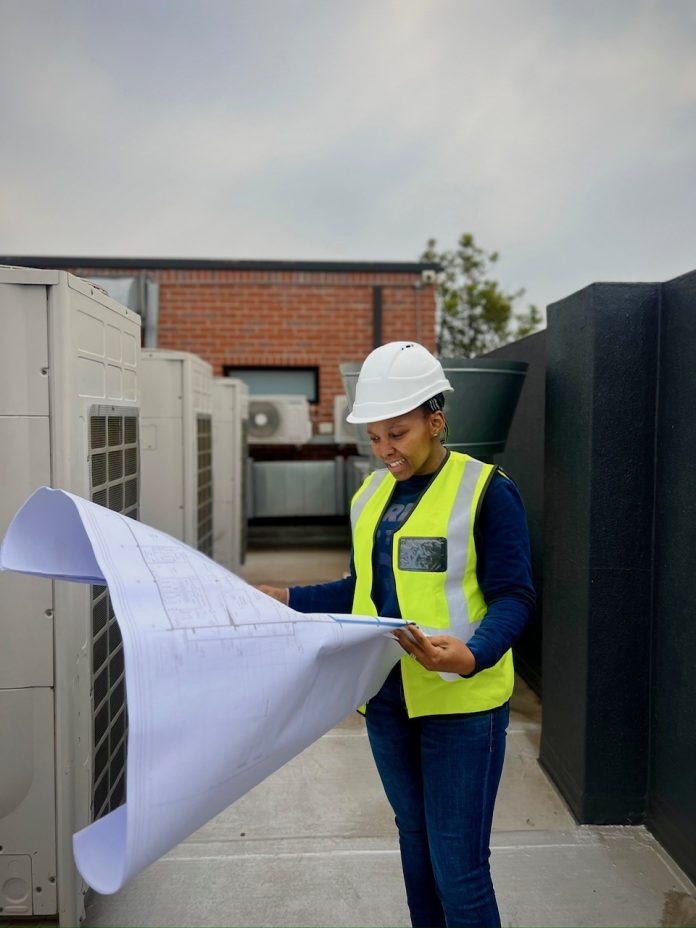The 2024 South African Housing Market Report reveals that the country’s residential property market comprised 6.91 million properties, valued at R6.789 trillion, at the end of 2023. As the country evolves in the face of global challenges and technological advancements, the residential property sector is experiencing significant transformations.
From sustainability initiatives to smart home technologies, the engineering industry is crucial in helping homeowners navigate these changes, offering innovative solutions to meet modern demands while adhering to regulatory requirements and environmental considerations.
Engineering sustainable solutions for new homeowner standards
Recent events, such as the severe floods in KwaZulu-Natal and the Eastern Cape in June 2024, have highlighted the urgent need for climate-resilient residential design. For this reason, sustainability has moved from a luxury add-on to a fundamental requirement in residential developments. The South African National Standards (SANS) have propelled this change since 2021, introducing SANS regulations requiring homes to be designed with energy efficiency considerations, taking into account factors such as climate and location.
One of the most significant changes is the requirement for residential properties to conform with the specified maximum annual energy consumption for this category of buildings. This shift has driven a surge in more efficient design methodologies and a focus on energy-efficient services within the residential space. Once reserved for commercial properties, energy modelling is now reducing homeowners’ electricity bills and increasing property values.
For instance, when designing a home, engineers shape the building envelope to maximise energy efficiency in line with SANS regulations, which set wall heat transfer limits based on the property’s location. A key example is the distinction in building requirements between a house in Durban and one in Johannesburg. The stark contrast between the two climates necessitates different approaches to residential design. For example:
- Durban, with its subtropical climate, faces high humidity and heat most of the year. Here, the focus is on maximising natural ventilation and minimising solar heat gain. Engineers might recommend larger openings on the side of the prevailing winds to capture cool breezes while using deep overhangs or vertical shading devices on the north-facing windows to reduce direct sunlight.
- In contrast, Johannesburg experiences a cooler, drier climate with cold winters. For homes in this region, engineers prioritise insulation and heat retention. This might involve specifying higher R-value insulation for walls and roofs, recommending double-glazed windows, and designing for passive solar gain during winter.

The orientation of the house becomes crucial:
- In Johannesburg, the design team might aim to optimise north fenestration elements to capture the winter sun.
- In Durban, they might orient the house to limit exposure to the harsh western sun and focus on orientating the house to facilitate natural ventilation.
These location-specific considerations ensure compliance with SANS regulations and significantly enhance comfort and energy efficiency in South African home designs.
Window placement and treatment have become critical factors in our designs. North-facing windows, while beneficial for natural light, can lead to excessive heat gain. Engineers, therefore encourage property owners to choose glazing that is suited to different climates which offers enhanced performance and quality, or to limit the number of windows on certain elevations to maintain optimal internal temperatures. Additionally, consider integrating shading devices, such as blinds or overhangs, inside or outside the building for improved thermal regulation. The goal is to create a thermal comfortable living environment while reducing the need for artificial heating and cooling.
The rise of intelligent living
While smart home technology is still in its infancy in South Africa, we’re seeing increasing interest, particularly among higher-income brackets. For instance, Statista data reveals that although smart home technology adoption in South African households is currently 11%, it’s projected to reach 20.6% by 2028.
The most popular features currently revolve around energy management and comfort control, including impactful smart home features like automated blind controls. By integrating sensors and smart controllers, blinds can automatically adjust based on the sun’s position and internal temperature readings. This simple yet effective system can significantly reduce the need for air conditioning, leading to substantial energy savings.
Another area where this technology is making inroads is in geyser management. With the integration of solar panels, homeowners can now use smart controllers to optimise their hot water usage. These systems can heat water during peak solar hours and switch off when solar output decreases, seamlessly transitioning to grid power when necessary.
Perhaps the most exciting development in this space is comprehensive energy management systems which can be incorporated in the home automation systems. These systems provide real-time data on energy consumption through smartphone apps, allowing homeowners to make informed decisions about their energy usage. For example, when solar output is lower on a cloudy day, the system might suggest turning off high-consumption appliances to conserve power.
Adapting space for multi-functional purposes
The global COVID-19 pandemic has accelerated the trend towards remote work, and this has had a significant impact on residential design. While dedicated home offices have been a feature in many homes for years, the industry is adopting a more integrated approach to work-from-home spaces.
In new developments, there’s a growing trend towards mixed-use buildings that combine residential, office, and retail spaces. This concept of everything under one roof is particularly appealing in urban areas where commuting can be challenging. From an engineering perspective, this requires us to design flexible heating, ventilation, and air conditioning (HVAC) systems that can efficiently serve diverse spaces with different usage patterns.
For existing homes, homeowners could consult engineers on ways to optimise spaces for dual use. This might involve designing better lighting systems for video conferencing or improving ventilation in areas now occupied for extended periods. The key is to create comfortable, functional spaces that can easily transition between work and personal use.
Innovative security solutions for peace of mind
Security remains a top priority for South African homeowners, and we’re seeing some innovative solutions in this space. One of the most exciting developments is the introduction of wireless security systems. These systems offer several advantages over traditional wired systems.
The wireless nature of these systems means they can be installed with minimal disruption to the property. There’s no need for extensive drilling or cable routing, which is particularly beneficial in existing homes. From an engineering perspective, homeowners should integrate these systems with backup power sources like UPS or generators to ensure continuous operation during power outages.
The future-proofing South African homes with emerging technologies
The residential engineering landscape in South Africa is evolving rapidly, driven by changing lifestyles, technological advancements, and a growing focus on sustainability. The engineering sector has a role in helping homeowners navigate these changes, balancing the needs of homeowners with regulatory requirements and environmental considerations.
The future of residential engineering in South Africa is bright, with opportunities to create comfortable and secure homes that are also smart, efficient, and sustainable. As we continue to innovate and adapt, we’re excited about the potential to transform the way South Africans live, work, and interact with their homes.

